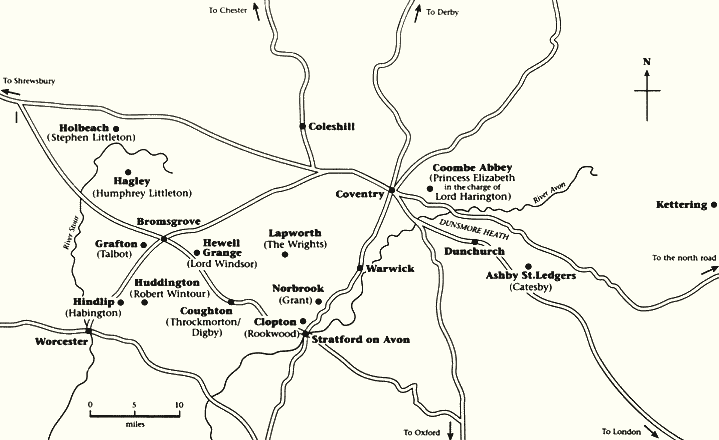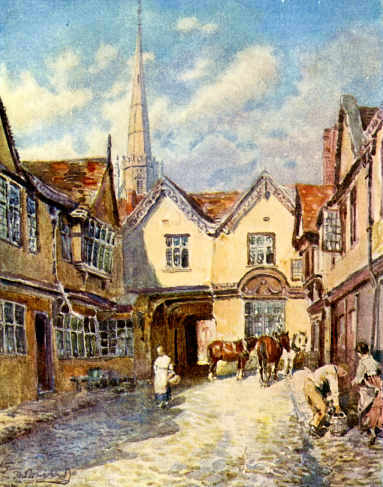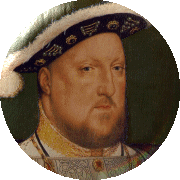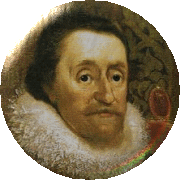Coombe Abbey & the Coventry connection
The Gunpowder plot itself was only one of FOUR major plots that had been hatched. Take a look at the Four plots page to find out more about these potentially history-changing schemes...

Click on this map to see an enlarged view of the Warwickshire locality where the conspiracy was hatched.
What was Coventry's connection with the Gunpowder Plot?
King James I sent his eight year old daughter, Princess Elizabeth, to live at Coombe Abbey and be looked after by Lord Harrington. The huge expenses involved in keeping her and the followers happy very nearly made him bankrupt.
In the early hours of November the 5th, Lord Harrington at Coombe Abbey received word of the uprising and the 'Hunting Party' on route from Dunchurch to capture her and place her on the throne as a Catholic Queen.
Coombe Abbey, close to Coventry, was central to the Warwickshire men who planned and carried out the plot to blow up King James I and all those attending Parliament on the 5th November 1605. Apart from one Yorkshire man, who was known to both the English and Spanish courts and could speak fluent Latin, Spanish and Italian, and a internationally renowned explosives expert, the ringleaders were Warwickshire men, led by Robert Catesby and the Wright brothers. Nearly all the plotters were in some way related to each other, and known troublemakers. Catesby and the Wright's were arrested and sent to prison in 1596 when Elizabeth I fell ill, 'just in case of trouble'.
What was Coventry like at the time?
Dancing in the street, street parties or carnivals; 'Coventry Plays', (the origins of today's Coventry Carnivals) were banned.
Mr. Massey tried to revive them to celebrate the Coronation of King James I. He spread the rumour that the King's daughter, Princess Elizabeth, was coming from Coombe Abbey to see the plays. The Puritan Council vetoed the plays, and Mr. Massey was thrown in jail.
An unmarried woman lodging in your house, selling cakes, or even playing ball games in the street on a Sunday, could land you in the stocks or even into jail !

(Fred Whitehead)
Fearing for Elizabeth's safety, Sir John Harrington sent her into the custody of Sir Thomas Holcroft, within the walled city of Coventry, where she lodged with Mr. Hopkins of Palace Yard, off Earl Street.
The Mayor, Mr. Collyns, and nine other citizens mounted guard on the house, drawing bows, pikes, blackbills, corslets, partisans, halberds and gloves from the city armoury.
The Great Fire of London?
Catesby captures Princess Elizabeth at Coombe Abbey.
Catholics rise and join the plotters.
They would have then formed a 'Council of Leaders', and tried to run the country from the late Lord Northampton's estate. Following this the English Civil War would probably have started nearly 40 years earlier.

